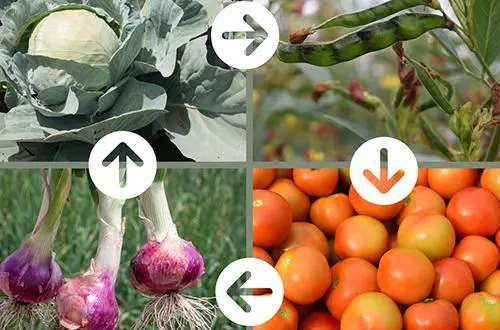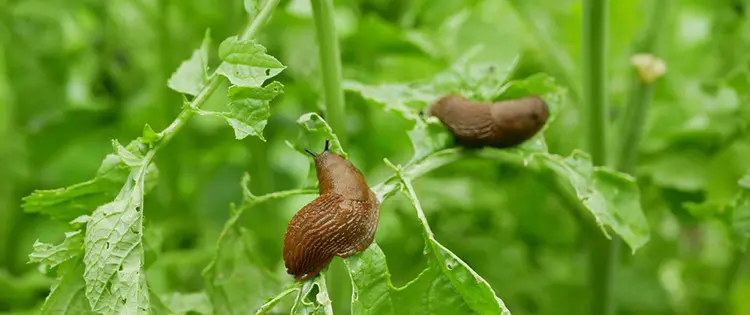Homesteading is an incredible journey filled with joy and rewards.
But let’s be honest, it’s not all rainbows and butterflies. From backbreaking labor to weather uncertainties, homesteaders face a whole lot of challenges. Yet, amidst all these hurdles, one foe truly got on my nerves – those pesky critters. From relentless aphid attacks to crops disappearing overnight, pest infestation literally tested my patience.
But here I am, ready to spill the tea on a homesteader’s worst enemy: the crop-eating critters. I’ll also share how to keep them at bay using eco-friendly methods.
So stick with us till the end to know all about it!
Sneaky Pests Take Aim at My Garden
Ah, the joys of homesteading – the fresh air, the wholesome crops, and the satisfaction of self-sufficiency. But, of course, it’s not always a walk in the park.
As a newbie, I faced my share of pest infestations, and I’m sure many of you can relate. At first, I spotted some minor signs, like chewed leaves, leaf holes, and plant wilting. However, my mistake was not paying much attention to them, thinking it was just a passing thing.
But then, one fateful day, I was met with a scene of devastation – my flourishing cucumbers were now destroyed, and the sunflowers were looking sad and droopy. Looking at the destruction, I went on a relentless hunt to determine what caused this havoc.
To my surprise, it was the tiniest of pests that posed such major problems. That’s when I knew I had to take action and find the best solution to protect my homestead from these little troublemakers.
I tried everything, from squishing them with my bare hands (not my proudest moment) to applying DIY remedies. But no matter what I did, it seemed like nothing could get rid of these stubborn pests.
Despite this, I didn’t let these encounters dampen my homesteading spirit. Over the years, I’ve discovered some tricks to keep them at bay that I will discuss next.
Related: 9 Best Plants That Naturally Repel Pests from Your Homestead

Best Solutions to Remove Pests From Your Homestead
Now that we’ve had a good laugh about the challenges of dealing with those clever pests, let’s find the best way to get rid of them.
After seeing my garden in ruins, I searched everywhere for solutions, including books and forums. In fact, I also took advice from other homesteaders. However, one thing was crystal clear in my mind – I would not resort to using harmful chemicals on my beloved plants.
This decision earned me some backlash, especially from experienced homesteaders who believed in the effectiveness of chemical pesticides. It made me doubt my choice of organic solutions, and I’ll admit, I was tempted to take the easy route.
But the more I researched, the more I realized that those chemical-laden options weren’t sitting right with me as they were:
- Harmful to the environment
- Left residual effects on crops and soil
- Developed resistance in pests
- Posed health risks to humans and animals

Organic and Biological Ways to Eliminate Pest Infestation
Since I was left with no option, I set out on a mission to find the eco-friendly superheroes of pest control. And let me tell you, I discovered an army of them, including:
Companion Planting
First off, companion planting is the bomb! Who knew certain plants could be best buddies and protect each other? I planted marigolds, basil, and mint around my precious crops, which was like creating an invisible shield. Those sneaky pests had no chance against the powerful scents of my new plantation.

Crop Rotation
Next, I avoided planting similar veggies in the same spot every year. Since each crop attracts particular types of pests, switching them every 3 years really helped as I was able to starve out those critters. For example, if I grew tomatoes in one bed this year, I would plan on planting broccoli or carrots the next.

Diatomaceous Earth
This miracle powder also worked wonders for me. Just sprinkle it around the garden or in plant beds, and voila! Your work is done. It dehydrates and kills pests like slugs, beetles, and ants.
Related: This Is Why You Should Have Diatomaceous Earth Around Your Property

Neem Oil
Neem oil is a potent natural insecticide and repellent. I mixed it with water and sprayed it on my plants, effectively deterring aphids, mites, and other common pests.

Soil-Based Bacteria
Spreading spinosad, a soil-based bacteria, also showed effective results for me. It’s perfect for controlling caterpillars and other harmful insects without disturbing the beneficial ones.
Row Covers
I also used the row covers. These sheets not only shielded my plants from the harsh weather but also acted as a physical barrier against those sneaky pests.

Garlic Powder or Spray
Last but not least, I tried garlic powder spray to keep pests away from my plants. Its pungent aroma works as a natural deterrent for many insects. Just crush a few garlic cloves, mix them with water, and let the solution sit overnight. Then strain it, and you’ve got a powerful homemade pest-repellent ready for action!
Related: How To Make A Safe and Effective Organic Garden Pest Control Spray

Action Plan For A Pest-Free Future
After dealing with my fair share of pest infestations, I’ve learned a thing or two about keeping these unwanted guests at bay. Here’s the inside scoop on how you can do it, too:
- Keep an eagle eye on your plants, and be ready to spring into action at the first sign of trouble. Regularly inspecting your garden allows you to catch any sneaky pests before they turn your veggies into their buffet.
- Use pest-resistant seeds, as they are a game-changer for preventing infestations. They have built-in defenses against pests, making the vegetation less vulnerable.
- Organic mulches like straw or wood chips create a barrier that pests find difficult to cross. However, be cautious with certain mulches like fresh grass clippings, shredded bark, or animal manure, as they can attract critters instead.
- Keep things tidy and eliminate hiding spots for pests. Remove dead leaves, fallen fruits, and any debris that can become their playground.

Some Do’s And Don’ts
Alright, now that we’ve got those pesky critters under control, let’s go over some do’s and don’ts while fighting for your beloved homestead.
Do’s
- Stick to natural and eco-friendly solutions when dealing with pests
- Work with nature rather than against it by creating a balanced ecosystem
- Stay informed about different pests and their habits to make better pest control decisions
Don’ts
- Avoid using chemical pesticides
- Don’t overwater, as it can lead to root rot and attract pests
- Give your plants enough space to grow and breathe
As we have come to an end, let me tell you when those sneaky pests first invaded my garden, I was totally puzzled and frustrated. But once I found the right solution, I felt in control and ready to face this challenge.
With these battle-tested strategies, you’ll also be ready to wave goodbye to these critters and keep your garden thriving, pest-free, and packed with delicious products.
Remember, a little planning and a dash of Mother Nature’s wisdom will go a long way in keeping your homestead pest-free and happy!
You may also like:
 12 Plants You Should Grow Together
12 Plants You Should Grow Together
If You See This Plant in Your Backyard, Burn It Immediately! (Video)
How To Make Pickled Garlic (And Why You Should Do It)
This Is Why You Should Grow Living Mulch In Your Garden
Everything You Need To Know About Crop Rotation (And Why You Should Do It)














